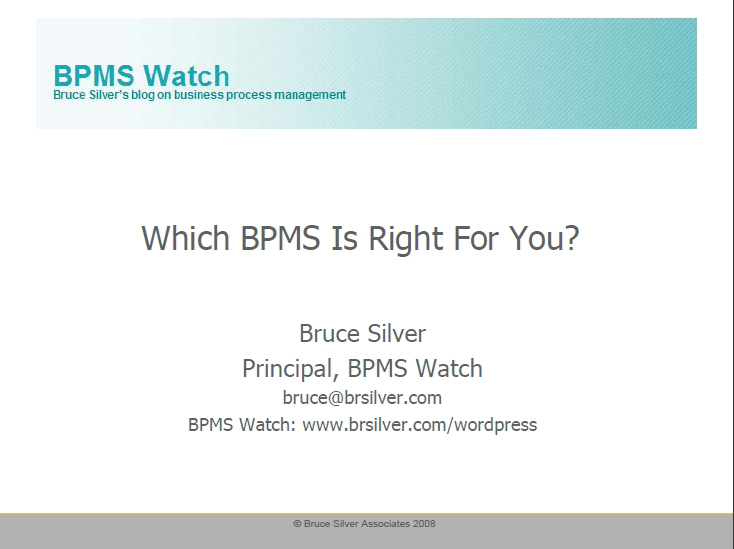Over the past 12 months, we reviewed 11 leading BPM Suites using a common analytical framework, and published the results using a common outline as The BPMS Report series, available for free from BPMInstitute.org. Based on that research, we now offer a comparative scoring of these offerings. Each BPM Suite was rated for both human-centric and integration-centric processes, and the human-centric evaluation was further broken out into two subclasses, production workflow and case management.
Over the past 12 months, we reviewed 11 leading BPM Suites using a common analytical framework, and published the results using a common outline as The BPMS Report series, available for free from BPMInstitute.org. Based on that research, we now offer a comparative scoring of these offerings. Each BPM Suite was rated for both human-centric and integration-centric processes, and the human-centric evaluation was further broken out into two subclasses, production workflow and case management. Thus, identifying the BPMS “leaders” depends on whether your goal is a single BPMS to handle all types of processes, or separate consideration of human-centric and integration-centric processes, or even specific focus on production workflow or case management. Also, our analysis concerns only the current BPMS offering. It ignores factors in other analysts’ ratings – potentially important in the buying decision – such as the vendor’s size, financial condition, international sales capability, and “completeness of vision.”
Attend this round table and find out which of the BPMS leaders are rated best to handle all types of processes, human-centric processes and integration-centric processes.
Evaluated BPMS offerings include:
|
|
|
|
|
|
|
|
|
|
|
|
|
|
|
|
You will also gain a snapshot of each of the BPMS leaders’ strengths and weaknesses.
If you are in charge of evaluating BPM suites for your organization you won’t want to miss this round table.

















